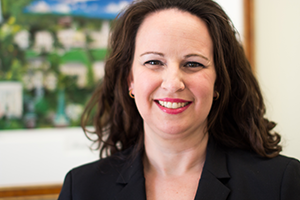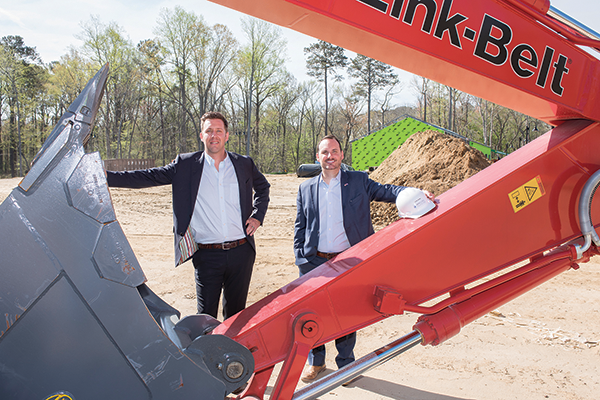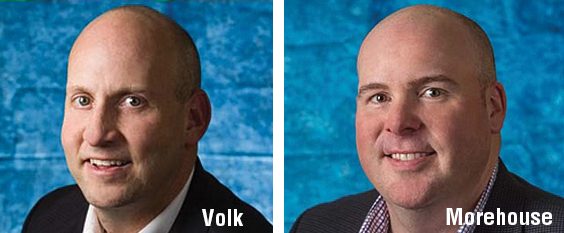Mary Baldwin University is celebrating its 175th anniversary this year, but the Staunton-based institution has not reached this age by dwelling on the past.
This year, Mary Baldwin expects to complete an $80 million capital campaign while admitting its first undergraduate male residential students to a new program called University College.
The co-ed program will be located on the university’s Staunton campus but will be separate from Mary Baldwin College for Women.
The University College announcement, made last November, caught many of its women’s college graduates off guard.
 “My gut reaction was a little ping in my heart because it’s another change for Mary Baldwin,” says Theresa Cash Lewis of Midlothian, who is president of Mary Baldwin’s alumni association. “We are celebrating 175 years, and I have to appreciate the fact that the school has always been innovative to stay relevant. First and foremost, we want to see Mary Baldwin College for Women succeed.”
“My gut reaction was a little ping in my heart because it’s another change for Mary Baldwin,” says Theresa Cash Lewis of Midlothian, who is president of Mary Baldwin’s alumni association. “We are celebrating 175 years, and I have to appreciate the fact that the school has always been innovative to stay relevant. First and foremost, we want to see Mary Baldwin College for Women succeed.”
University officials said they decided to begin the new program after looking at ways to develop its pool of potential applicants.
“This was an opportunity not only to build on the strength of our programs and what makes us Mary Baldwin but also to draw on a larger pool that did include men,” says Karen Bailey-Chapman, the university’s interim vice president for external affairs.
The creation of University College follows the recent decision to rename Mary Baldwin College as Mary Baldwin University.
The name change helps the institution reflect “who we are today and who we will continue to become,” says Mary Baldwin President Pamela Fox. “It is now more appropriate than ever to emphasize we have always been courageous and entrepreneurial. We have kept the institution relevant to the women and men of our times. It’s in our DNA.”
Evidence of Mary Baldwin’s evolution can be seen in its geographic and academic reach. In addition to its main campus in Staunton, the university includes the Murphy Deming College of Health Sciences in Fishersville and a dozen regional education centers across Virginia.
At its commencement this May, the university will hand out its first doctoral degrees in physical and occupational therapy as well as its first bachelor’s degree in nursing.
“Commencement is always a special day at Mary Baldwin, but this year will bring an added sense of significance,” Fox says. “Handing out the first Mary Baldwin University diplomas in May will be doubly meaningful, both because of the institution’s new name and its 175th anniversary.”
Pioneering educator
The school’s name honors pioneering educator Mary Julia Baldwin. She was one of the first students to attend the school, which was founded as Augusta Female Seminary in 1842.
Baldwin became the school’s principal in 1863 and led it until her death in 1897. During her tenure, she founded the South’s first music conservatory and introduced university-level study. The school changed its name to Mary Baldwin College in 1923 when it became a four-year college.
During its history, Mary Baldwin has instituted a number of firsts in Virginia. The list includes the state’s first adult degree program, begun in 1977 (now offered online as well as at the Staunton campus and at the regional centers). In 1995, the college began the Virginia Women’s Institute for Leadership, still the only all-female corps of cadets in the nation.
Bailey-Chapman, a board member and 1999 graduate, was in the corps’ first class. “It was an incredible opportunity,” she says. “We gained experience on the leadership side with regard to military and also public- and private-sector careers.”
Today, the VWIL Corps of Cadets includes 100 women. Since its inception, it has produced more than 400 graduates and attracts nearly half of its cadets from out of state.
A shrinking pool of students
Virginia was home to 11 women’s colleges in 1970. Mary Baldwin today is one of three. The others are Hollins University in Roanoke (which also is celebrating its 175th anniversary) and Sweet Briar College in Amherst County (founded in 1901).
There are only about 35 women’s colleges or universities in the U.S., Fox says. “The numbers have been declining over the last two or three years.”
Mary Baldwin currently has 1,761 students enrolled in all of its programs compared with 1,797 in 2012-13 before it opened the Murphy Deming College of Health Sciences.
Recruiting students to any college in the U.S. today is a challenge. The number of first-time college graduates (students who are getting their first associate or bachelor’s degree) in the 2015-16 academic year declined 1.4 percent from the previous year, according to the National Student Clearinghouse Research Center.
The even bigger challenge is recruiting students to a women’s college. “Less than 3 percent of female high school students indicate to the College Board [which administers the SAT college admissions exam] that they are interested in attending an all-women’s college after graduation,” Fox says.
Many of the university’s students, she adds, came to the campus not knowing they wanted a women’s college-experience, “but they fell in love with it. It’s a very special, important, empowering approach for women, and we believe in that strongly,” Fox says.
Lewis was one of those students. “It was the best four years of my life,” she says. “I was surrounded by other women that felt the same and valued single-sex education. I had the freedom to grow myself as a leader. I always had that drive to succeed, but Mary Baldwin helped me grow that.”
A range of reactions
Because of what Mary Baldwin means to her, Lewis says she understands why some women’s college graduates are worried about University College.
“I think their passion is rooted in the amazing experience they received here,” she says, adding that the school vows to preserve that type of experience through the College for Women.
The creation of University College doesn’t mean the “residential college for women becomes stagnant,” Bailey-Chapman says. “It’s a way to help grow it and move it forward, have it relevant in today’s world.”
Since University College was announced last year, Mary Baldwin has had a wide range of reactions. “We made a concerted effort to listen to the ideas of graduates. We did a five-city tour and a summit on campus,” Fox says. “We want to take all the engagement and passion that our alumnae have and move forward together. We are confident we can do that.”
Emily Oehler, a 1993 graduate, was surprised and disappointed when she heard the news. “Those of us that have an all women’s education are proud of that,” she says. “We didn’t know this was on the table.”
She reached out to the school to get more information. “I wanted justification,” she says. “Over time I got the information collectively from different individuals. It did make sense. In my mind, I understood, but my heart still felt sad about it. I did have a sit down with President Fox, and she was forthcoming with information.”
University College will be home to three co-ed living and learning communities — Education Leaders, Shakespeare and Performing Arts and Murphy Deming Scholars in Health Professions.
Each program offers students the opportunity to earn their bachelor’s degree and a master’s degree in four years or a bachelor’s degree in three years. “Being able to have students get their undergraduate and graduate degrees in four years was something that was important to us,” Fox says. “It’s not just a fast way but also an intensive and extensive way. There are very few programs like this in the U.S.”
Students that qualify for early entrance into the program are able to skip their senior year of high school. By mid-February, Mary Baldwin had received more than 600 applicants for the new co-ed programs with only 75 slots to fill. Twenty-five percent of the applicants are men.
In addition to University College, Mary Baldwin continues to add programs. This fall the health sciences college will begin an online master’s program in health-care administration, and the College for Women will launch its own living and learning community called Women Entrepreneurs that develops leadership and networking skills. Students consult with local entrepreneurs and have access to peer mentors that can offer entrepreneurial support.
A new MBA program is based on the premise that business should not only generate a profit but also have a positive impact on society or the environment. “We create programs that are unlike other programs in the U.S.,” Fox says.
This past year and the upcoming year are evolutionary, she adds. “We never stand still.”
 Ross Vierra has an eye for opportunity.
Ross Vierra has an eye for opportunity.


 GuidePoint Security founders Michael Volk and Justin Morehouse credit the company’s rapid growth to its focus on customers’ needs in providing cybersecurity services. “We focus on what we do, and that’s security,” says Volk.
GuidePoint Security founders Michael Volk and Justin Morehouse credit the company’s rapid growth to its focus on customers’ needs in providing cybersecurity services. “We focus on what we do, and that’s security,” says Volk. “My gut reaction was a little ping in my heart because it’s another change for Mary Baldwin,” says Theresa Cash Lewis of Midlothian, who is president of Mary Baldwin’s alumni association. “We are celebrating 175 years, and I have to appreciate the fact that the school has always been innovative to stay relevant. First and foremost, we want to see Mary Baldwin College for Women succeed.”
“My gut reaction was a little ping in my heart because it’s another change for Mary Baldwin,” says Theresa Cash Lewis of Midlothian, who is president of Mary Baldwin’s alumni association. “We are celebrating 175 years, and I have to appreciate the fact that the school has always been innovative to stay relevant. First and foremost, we want to see Mary Baldwin College for Women succeed.”